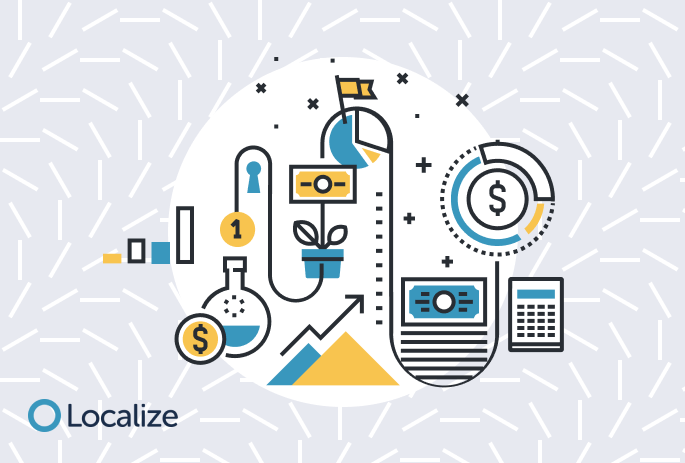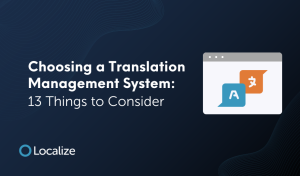One of the biggest challenges of global marketing is the localization process. There is only one way to manage a large-scale localization strategy: with translation technology. Translation tools like a TMS (translation management system) can make challenging and repetitive translation tasks much easier.
Ready to transform the way you do global launches? Read on to find out why a TMS can help your team, and how to measure internal success with ROI metrics.
What’s a TMS, and Why is it Helpful?
TMS technology simplifies translation and localization workflows. Modern TMS tools use automation and artificial intelligence to eliminate repetitive translation tasks and get smarter and more accurate over time. Here are some additional benefits:
- High translation quality
With features like translation memory and easy integration with LSPs (language service providers), a TMS can give you a big quality boost throughout the entire translation process. - Automated translation management
Translation projects are notoriously repetitive, but automation can remove a lot of headaches. Automated workflows scan for new content on your site and automatically publish new translations. This keeps your sites and applications effortlessly up-to-date. - Time savings
A TMS can help you get high-quality translations—fast. Features like style guides, glossaries, and integrated machine translation make translation more efficient and accurate.
Despite all the advantages of a TMS, some people still prefer to do things the old-fashioned way: shuffling files back and forth with lots of spreadsheets and emails. Fear of translation technology usually stems from one area – expense. They don’t realize that TMS tools have a great return on investment (ROI).
Measuring the ROI for Translation Technology
Here are a few ways you can measure the ROI of translation tools like a TMS (translation management system).
1. Time to Market
Conventional translation tools like spreadsheets and emails require a ton of effort and time. Most businesses that rely on outdated translation tools spend more time preparing than actually getting the work done. As the delays pile up, you’ll lose the chance to quickly market to new customers in different locales.
In contrast, a good translation management system automates all phases of the preparation process. You can request translations immediately, share notes with your translators, and save commonly used phrases in your style guide and translation glossary. A TMS can help you deliver a localized experience to customers before your competition so you can gain critical market share faster.
| ROI Tip: Consider measuring the time-to-market speed of your localization projects both before and after you try a TMS. How much slower was the translation process before you invested in a TMS? This metric can show stakeholders how the right tools can save time and money for the business. |
2. Reduced Rate of Errors in Translations
If you could rank localization challenges, translation context is probably number one. Often, translation agencies need a lot of clarification and context help from their clients. This can result in back-and-forth emails and lots of lost time.
A translation management system overcomes this by presenting the translator with visual context. They can see the content in its original environment, which allows them to understand exactly what you’re saying. With good context provided by a TMS, translators can make better judgments and craft incredibly precise translations.
| ROI Tip: Be sure to measure the accuracy of your translations before and after you start using a TMS. Does your TMS reduce common translation errors? Higher quality translations can save significant time and money. |
3. Scalability
Conventional translation solutions aren’t easily scalable. The more language pairs you add, the more effort you will have to put in. This will ultimately lead to a strain on your internal resources and the translation companies you collaborate with. Even small mistakes can lead to delays that take days, weeks, or months.
A TMS is designed to be scalable. They can eliminate irrelevant tasks and automate relevant ones. Managing a large number of languages becomes significantly easier with a TMS. And most importantly, you can update localized content frequently without overstraining your localization teams.
| ROI Tip: Don’t forget to analyze your global scalability. Was it difficult to offer content to your customers in lots of different languages before you used a TMS? How long did it take to add new languages in the past, and how long does it take now? A TMS can make scaling up and adding new target languages much simpler. |
Conclusion: Choosing the Right Translation Technology
When you’re measuring ROI for translation technology, remember that truly efficient and cost-effective localization requires a good TMS.
Localize is an advanced TMS that helps hundreds of businesses manage and publish their translated content. Whether you’re a small business or a huge enterprise, Localize can keep your translation costs affordable and tailor a plan for your budget.
Contact us today to learn how we can help you break into new markets!







